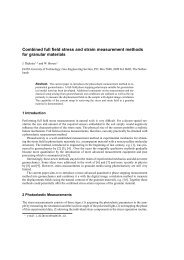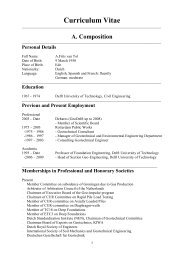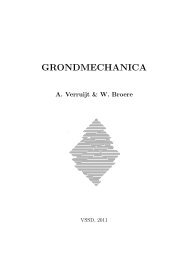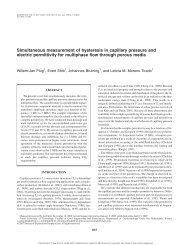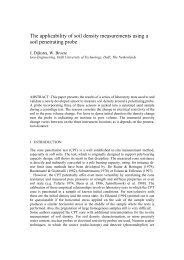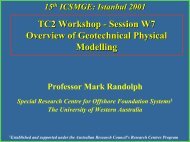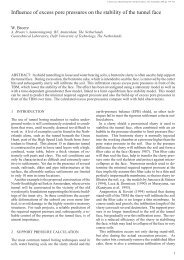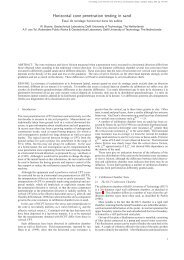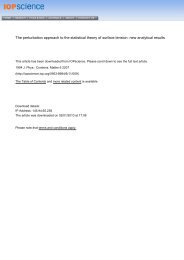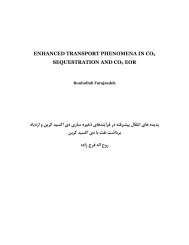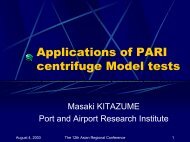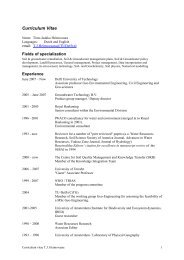Tunnel Face Stability & New CPT Applications - Geo-Engineering
Tunnel Face Stability & New CPT Applications - Geo-Engineering
Tunnel Face Stability & New CPT Applications - Geo-Engineering
Create successful ePaper yourself
Turn your PDF publications into a flip-book with our unique Google optimized e-Paper software.
1.2. Outline of this Thesis 3support pressure, which can deal with stratified heterogeneous soils and incorporates the effectsof support medium infiltration, but will also be applicable in cases where no infiltration occurs.Using this model, the influence of infiltration will be studied through a parameter analysis aswell as by comparison with recent Dutch field cases.The second part of this study will investigate the possibilities of horizontal cone penetrationtesting and attempt to find the similarities and differences between horizontal and traditional(vertical) cone penetration. To that end laboratory tests in a calibration chamber will be presentedand an analytical model will be derived. For practical reasons the calibration chamber tests willbe limited to sands at different densities.The third part will investigate the possibility of using a piezocone penetration test (<strong>CPT</strong>U)to determine the liquefaction potential of sands. To this end a number of tests will be performedin a calibration chamber using an adapted sounding installation and a regular piezocone. Againthese tests will be limited to clean sands at different densities.1.2 Outline of this ThesisChapter 2 deals with the stability analysis of the tunnel face. Within this chapter the first sectiongives a short introduction as well as an overview of the state of the art and literature. Section 2.2forms the central part of the chapter, where the new stability model is described and brieflyillustrated. In section 2.3 an extensive parameter analysis is presented, followed in section 2.4by a comparison with several recent field cases. Section 2.5 subsequently gives a short overviewof various influences on the pore pressures around the tunnel boring machine and section 2.6gives a very concise overview of the model and the main conclusions.Readers who want to gain a quick understanding of the stability model could start out withthese conclusions (section 2.6) and after that refer to the appropriate parts of section 2.2.Chapter 3 deals with the interpretation of Horizontal Cone Penetration Tests. After a briefintroduction, it start of with a concise overview of the interpretation of regular (vertical) conepenetration tests. Thern the various laboratory tests performed, and their results, are discussedin sections 3.3 and 3.4. Section 3.5 briefly lists the available data from field tests on horizontalcone penetration. In section 3.6 a simple analytical model is derived to aid in interpretingthe differences between horizontal and vertical cone penetration, followed by conclusions insection 3.7.The reader who is interested in a quick understanding of horizontal cone penetration mightstart with the conclusions of this chapter and after that skip back to the results of the laboratorytests, starting in section 3.3.3.Chapter 4 gives the results from the high-speed piezocone penetration tests. It starts out witha brief introduction, and shortly describes the determination of the liquefaction potential of soilsin section 4.2. Then an overview is given of the current literature concerning the influence ofthe penetration speed on the piezocone test results in section 4.3. Section 4.4 gives an overviewof the test conditions and results and is followed by conclusions.For a quick overview of the test results, and in view of the length of the chapter, the readermight opt to start reading at section 4.4.The final chapter gives a short overview of the main conclusions and a number of recommendationsconcerning the optimisation of the tunnel boring process.



